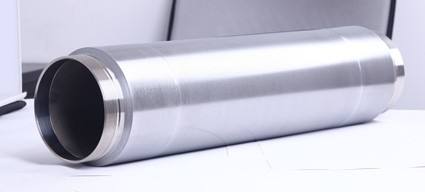Rotary sputtering target technology has been widely used in thin film deposition, especially for large area coating, such as architectural glass and flat panel displays coating manufacturing. The standard manufacturing methods are plasma spraying onto the base tubes, casting, and extrusion of the complete assembly.

Comparing with planar sputtering target , the rotary sputter target contains more material and offers a greater utilization, which means longer production runs and reduced downtime of the system, increases the throughput of the coating equipment. Besides, rotatable targets allow the use of higher power densities due to the heat build-up being spread evenly over the surface area of the target. As a consequence, an increased deposition speed can be seen along with improved performance during reactive sputtering.
Stanford Advanced Materials provides the custom-made cylindrical rotary sputtering targets, mainly Cr, Ag, Al, Si, Sn, Ti, Stainless steel, TiO2, W, Ta, Mo, Nb, Cu and other metal and alloy materials.
Sprayed: SAM provides thermally sprayed rotary targets providing optimal process stability and performance, including plasma, arc and cold spray production method. The main materials are AZO, ITO, Mo, Si, TiOx, ZnO, and ZTO.
Cast: Main advantages are high compositional and microstructural consistency and purity control, which contribute to high process yield and long target life. Products include InSn, Sn alloys, ZnAl and ZnSn materials.
Extruded: SAM is an established supplier of high-purity extruded Al, Cu, Mo, Nb, Ta, Ti, Zr, V and other materials with good purity and grain size.
HIP/Sintered: HIP products include Cr, Mo, ITO, AZO and ZnO sputtering targets.